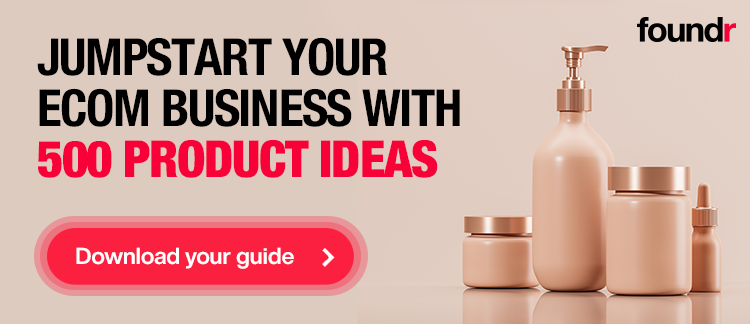
There are few feelings that are more exciting than working on a new product for your brand.
Whether it’s the first thing you’ve ever tried to sell or a new range you’re keen to add to your arsenal, designing a new product can be a ton of fun.
But at some point, to make that new product dream a reality, you need to get it manufactured.
To prevent the dream from ending and the bubble bursting, we’ve created a quick breakdown of each step of the journey, showing you exactly how to get your product manufactured.
How to Get Your Product Manufactured: A Step-By-Step Guide
Let’s dive straight in and identify some of the key steps you need to follow to get your product manufactured, assuming you already have your ideas tested and ready to go.
Don’t Skip: Product Sourcing Blueprint – Get the Same Method This Expert Used for 2,500 Products
Consider local or overseas
First things first, it’s important to consider where you want to source your supplier from. There are pros and cons to opting for a local supplier, and likewise for opting for one from somewhere like China.
With a local manufacturer, you’ll likely be expected to pay slightly higher costs due to the economic landscape of the US and have less of a selection of manufacturers., But you will also be able to have a much closer relationship with your supplier, which is ideal if you ever encounter any issues or have urgent questions that need answering.
It also lowers the chances of supply issues, as products are much less far to travel, but you will get cheaper options and more choices by looking overseas.
Send the right first message
Once you’ve identified some potential suppliers you are interested in potentially working with, it’s essential to get your first message just right.
Your first message should be clear, concise, and include:
A description of the product you’re after.
How do you foresee your potential long-term relationship?
A pitch of your brand and mission.
Remember, you are trying to sell them on becoming a long-term supplier for your product, and while some suppliers will just say “yes” to get your money, the very best will be much more selective regarding who they work with, which means your first message is crucial to start on the right foot.

Get samples
Once you’ve landed on a couple of suppliers and they have confirmed they are interested in working with you, it’s time to request a couple of samples. Suppliers tend to be reluctant to do one-off orders regularly but should be willing to provide you with at least a sample of your product so that you can test everything and make sure it works and looks as it should.
This is a crucial step not to miss; otherwise, you could end up with thousands of defects taking up vital space in your storage and costing you a ton to replace.
Negotiate on price
Now that you’re happy with your samples and you’ve had them tested by your potential target audience to ensure there are no oversights, it’s time to place your first order.
Suppliers will all have a minimum order quantity (MOQ) that you need to hit otherwise, manufacturing your product will not be worth their time and effort.
This MOQ will vary depending on several factors:
The size of the manufacturer
Cost (distance) of shipping
Complexity of the product design
However, one thing that is always consistent is that this number is negotiable so long as you approach it correctly. By explaining your long-term plans and building rapport with your supplier, you may be able to negotiate the MOQ down, keeping costs lower as you continue to scale your brand.
As the sales start to roll in, you can start increasing the order quantities.
Make your first order
Once the quantity and cost are confirmed, the last thing to do is make your first order! When making your first order, be sure to get everything written down, signed, and confirmed beforehand to avoid any nasty surprises.
After all, in the unlikely event that your new product is stuck on a boat trapped in the Suez Canal, kindly getting dug out by locals, you don’t want to be spending hours trying to work out whether or not you’re entitled to a refund.
Regardless of what terms you agree to, it is vital to get them signed by both parties on an official document before the work begins to cover yourself in case of any issues.
Keep Learning: How to Find a Manufacturer That Won’t Burn You
You Have Your Product, Now It’s Time To Sell It
Now your product has navigated its complex journey to make it to your doorstep, it’s time to start getting it sold before your partner starts giving you dirty looks when they pass all the cardboard boxes stacked up in the kitchen.
While we don’t offer relationship support, we do offer a free 500 product ideas guide, which will help you hit the ground running and make your business a raging success.








